
The best place to view the magical Piazza San Marco in Venice is the Isola di San Giorgio, such as the above picture, taken from the tower of Basilica San Giorgior Maggiore in the island, which, in turn, offered a wonderful for people standing in the Piazza looking out towards the lagoon:
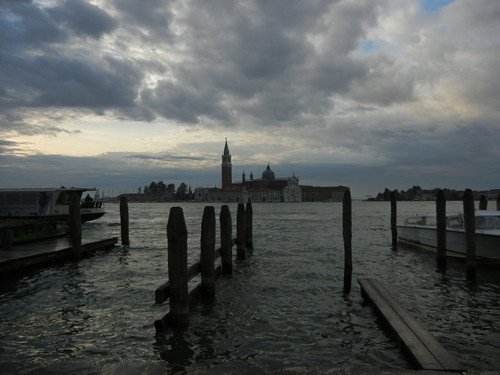
It was a short vaporetto (Little Steamer, water bus) ride from Venice to Isola di San Giorgio, and upon approaching, the imposing San Giorgio Maggiore, designed by the famed architect Andrea Palladio, became hugely exciting:

In contrast to the often extravagant image of the city, churches in Venice were often austere without and within. The typical cleanliness of the lines and color schemes of Palladio made those churches pure and purifying.
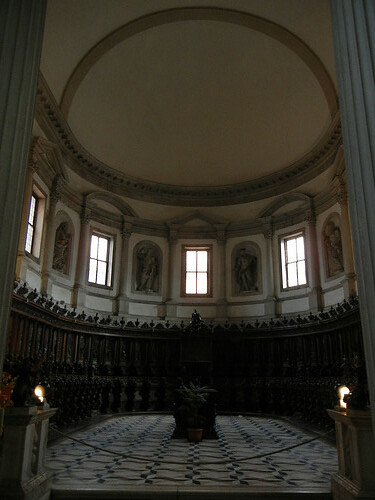
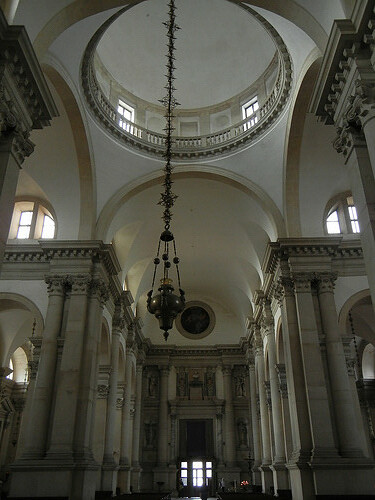
San Giorgio Maggiore boasted some wonderful paintings, such as Last Supper and The Fall of Manna by the great Jacopo Tintoretto:
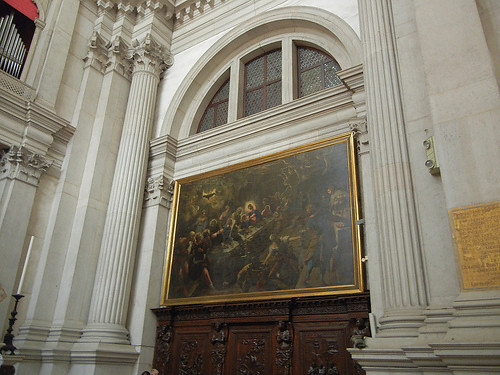
Last Supper by the great Jacopo Tintoretto
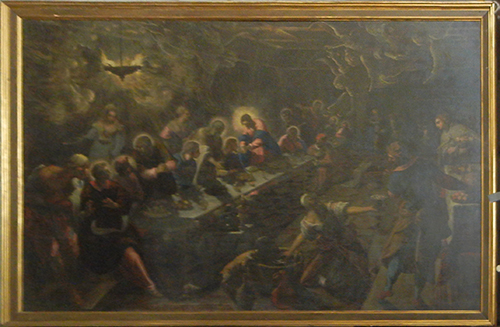
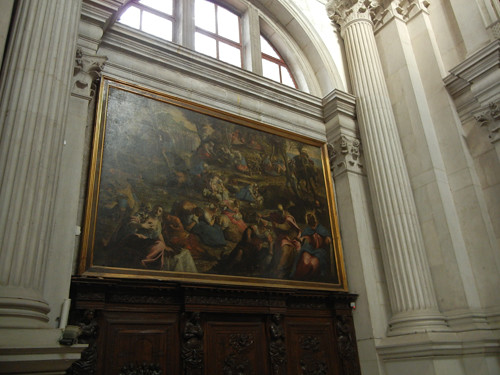
The Fall of Manna by the great Jacopo Tintoretto
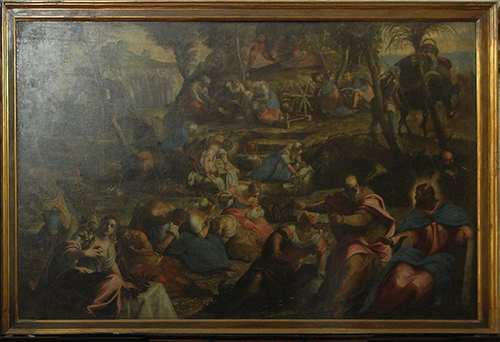
Yet, what left me the greatest impressions were the fantastic curved wood bas-reliefs decorating the choir, relating stories from the Bible:
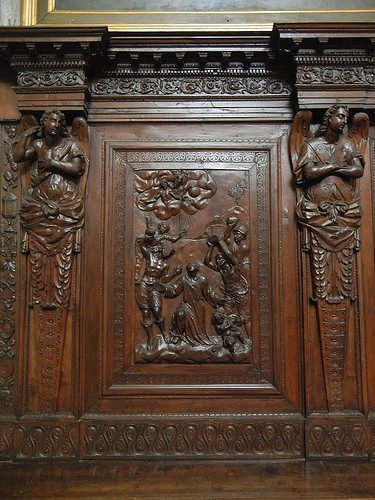
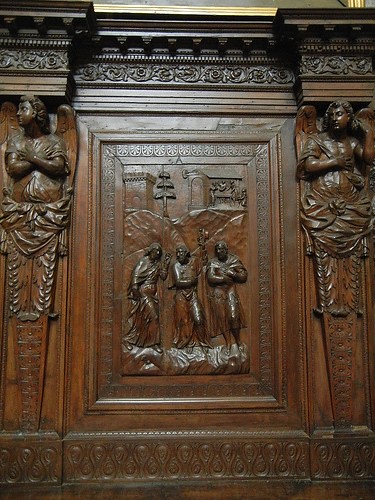
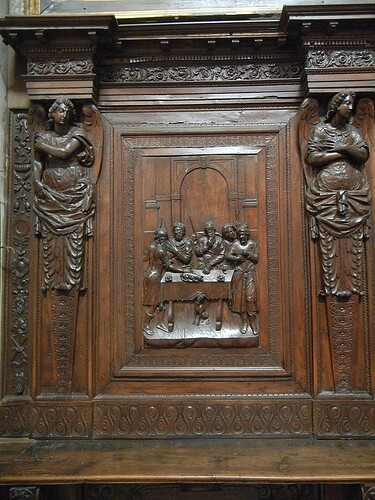
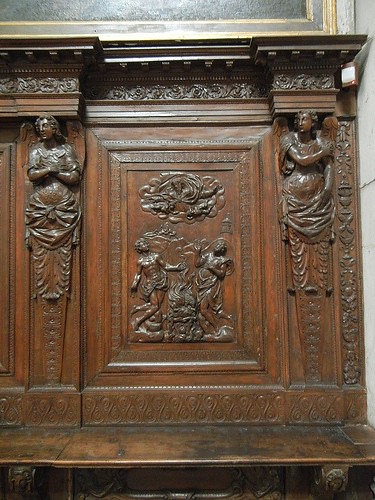
From the tower, one could also have a nice view of the cloister and its labyrinth below:
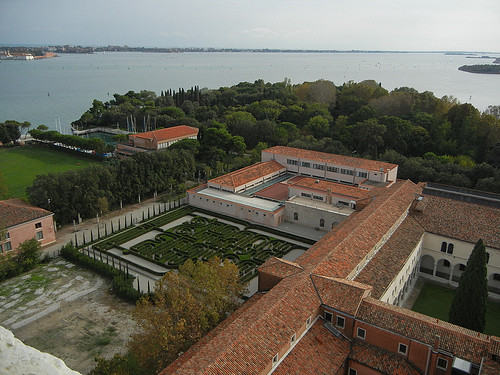
~~~~~~~~~~
Not far from San Giorgio Maggiore, there was another island, Giudecca, and on which the impressive church, Il Redentore, again, designed by Palladio:

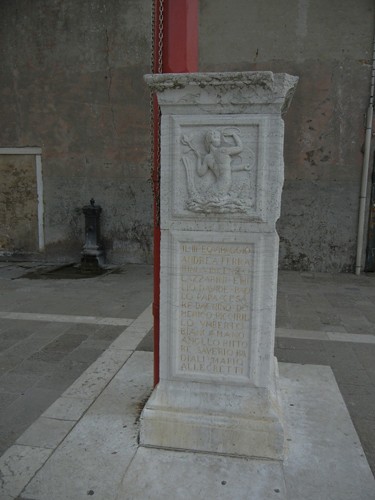
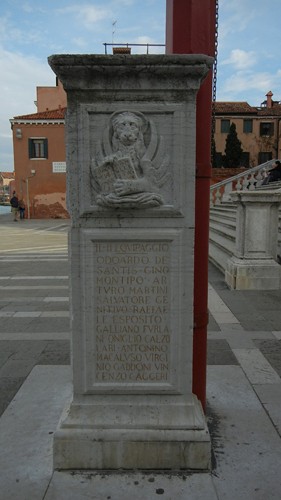
The small dome and the understated circular trimming at the base of the dome gave the space an elegant air; however, the pureness and openness of such space were slightly disturbed by a massive golden crown above the crucifix. Impressive surely but a bit too oppressively rich and earthly:

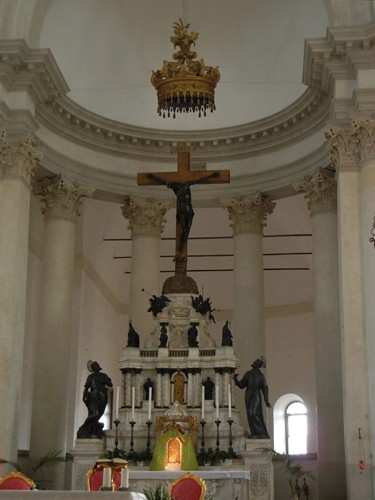
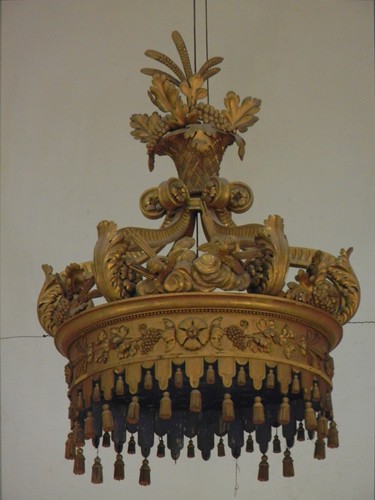
The weirdest thing in Il Redentore was their little sacristy, which contained many heads in a glass domes, of the size of old styled table clock. It was hard to tell if those were the preserved heads of some saints or just replicas of the holy relics. A little research resulted in this verdict: "The sacristy also contains a series of wax heads of Franciscans made in 1710." So, they were not as creepy as they seemed.
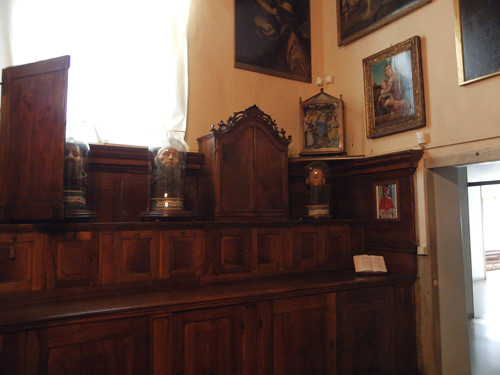
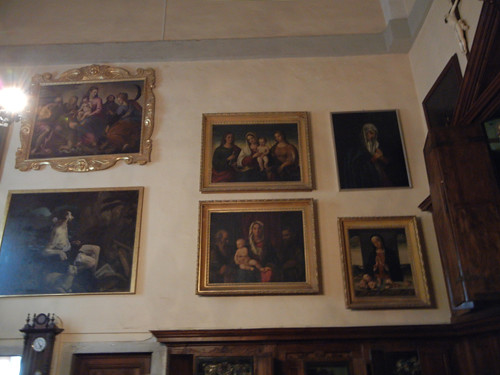
~~~~~~~~~~
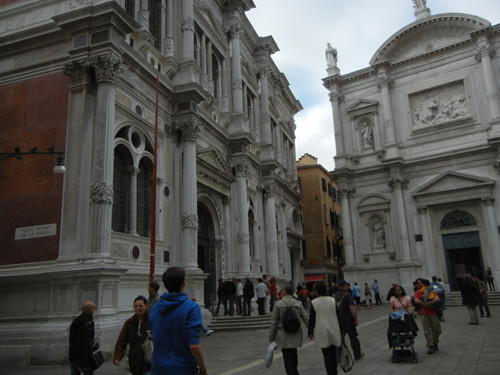
Scuola (left) e Chise (right) Grande di San Rocco
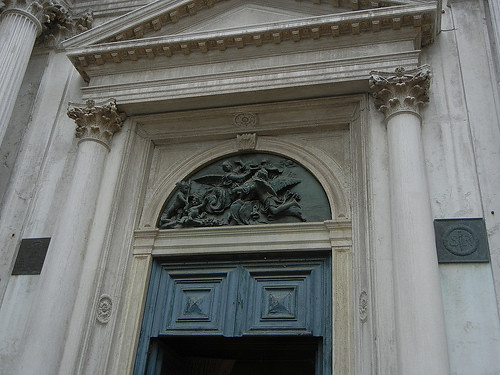
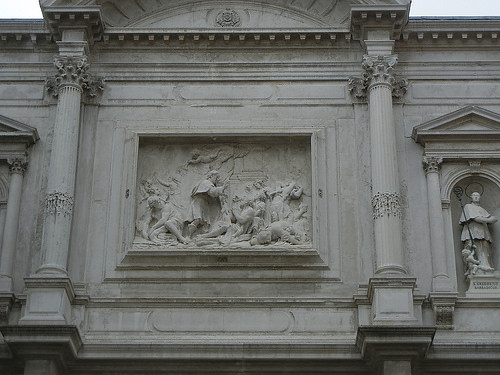
"Between 1565 and 1567, and again from 1575 to 1588, Tintoretto produced a large number of paintings for the walls and ceilings of the Scuola Grande di San Rocco.
In 1564 the painter Tintoretto was commissioned to provide paintings for the Scuola, and his most renowned works are to be found in the Sala dell'Albergo and the Sala Superiore. All the works in the building are by him, or his assistants, including his son Domenico: they were executed between 1564 and 1587. Works in the sala terra are in homage to the Virgin Mary, and concentrate on episodes from her life. In the sala superiore, works on the ceiling are from the Old Testament, and on the walls from the New Testament. Together, they show the biblical story from Fall to Redemption." [source: wikipedia]
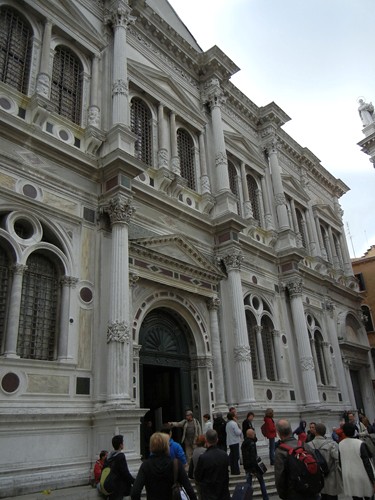
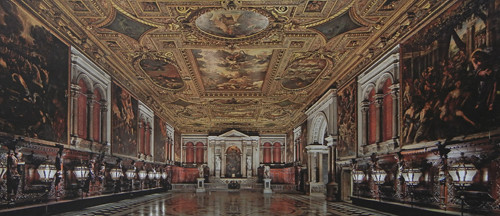

The Annunciation from the Tintoretto cycle, Image courtesy of Wikicommons by
Web Gallery of Art

The Circumcision of Jesus from the Tintoretto cycle, Image courtesy of Wikicommons by
http://germany.intofineart.com/usa/oil-painting-picture-32700-Tintoretto-The%20Circumcision.html

Miracle of the Bronze Serpent from the Tintoretto cycle, Image courtesy of Wikicommons by
Web Gallery of Art
The sheer immensity of those paintings, both the dimensions and numbers, overwhelmed me and the stupefying experience was not unlike the visit to the Sistine Chapel in the Vatican. My view of Tintoretto increased dramatically since that visit.
Related posts on Art · 文化 · Kunst:
- Famed Palaces and Houses (Ca') in Venice
- Two Museums in Venice - Gallerie dell'Accademia & Collezione Peggy Guggenheim
- Bridges in Venice, Italy
- Magical Piazza San Marco in Venice
- Teatro La Fenice di Venezia (La Fenice Theatre in Venice)
- Boy With Frog Sculpture and Punta della Dogana, Venice
- Bus Ride From Graz, Austria to Venice, Italy
- Magnificent Churches in Vienna
Label: Italy, Austria and Italy Trip 2012





No comments:
Post a Comment